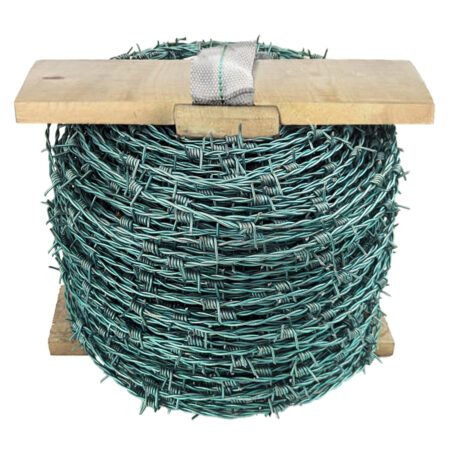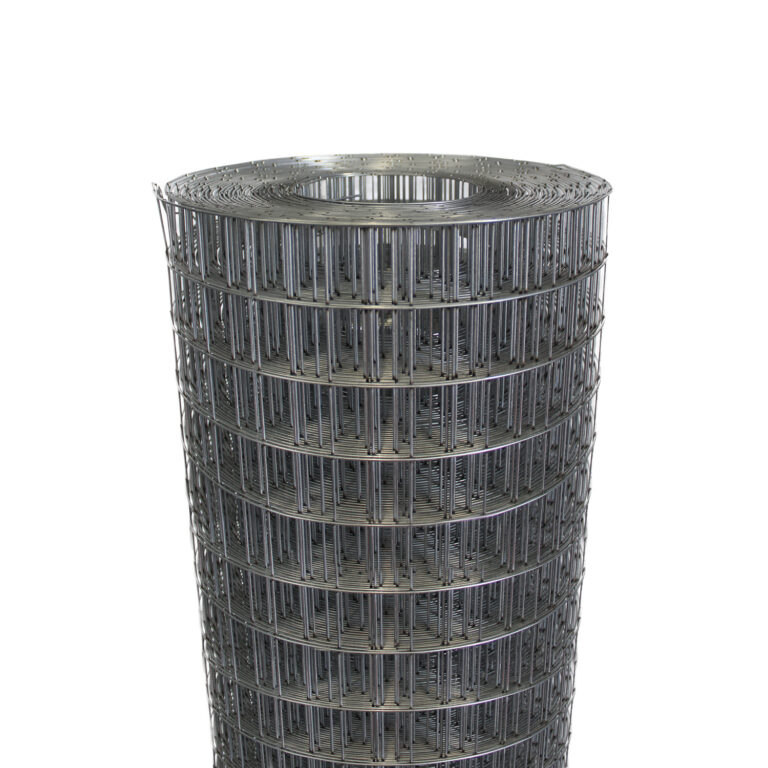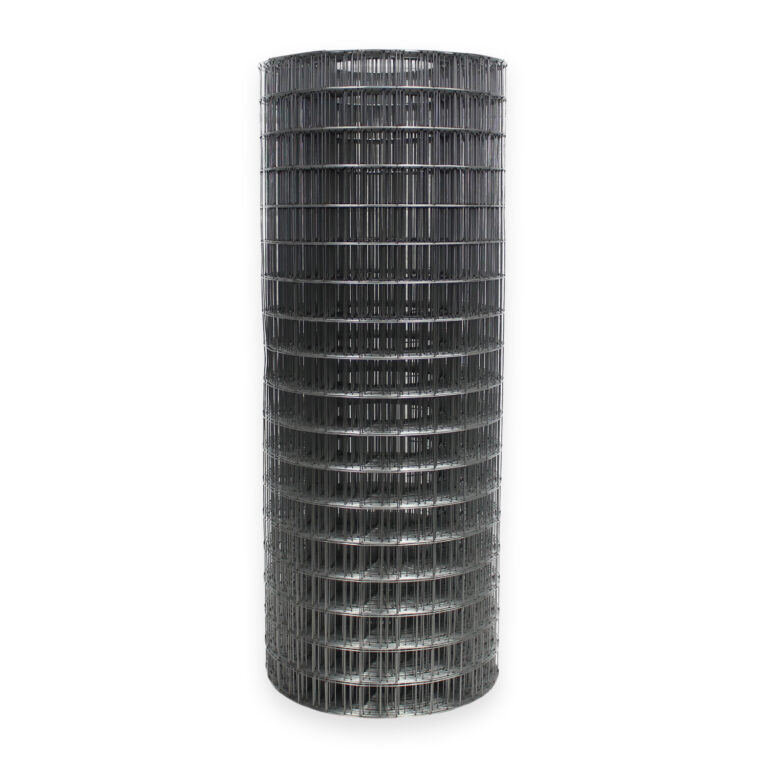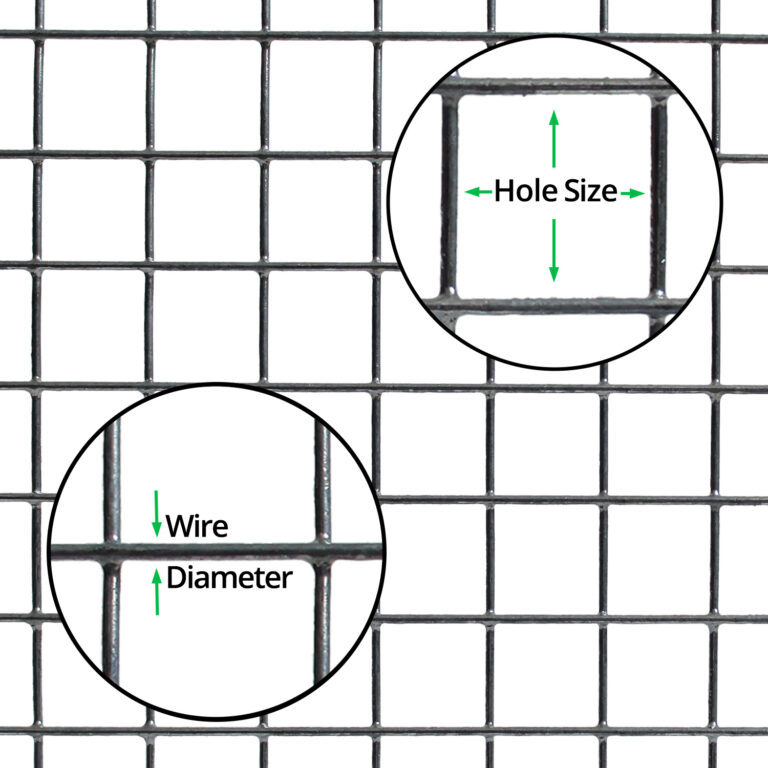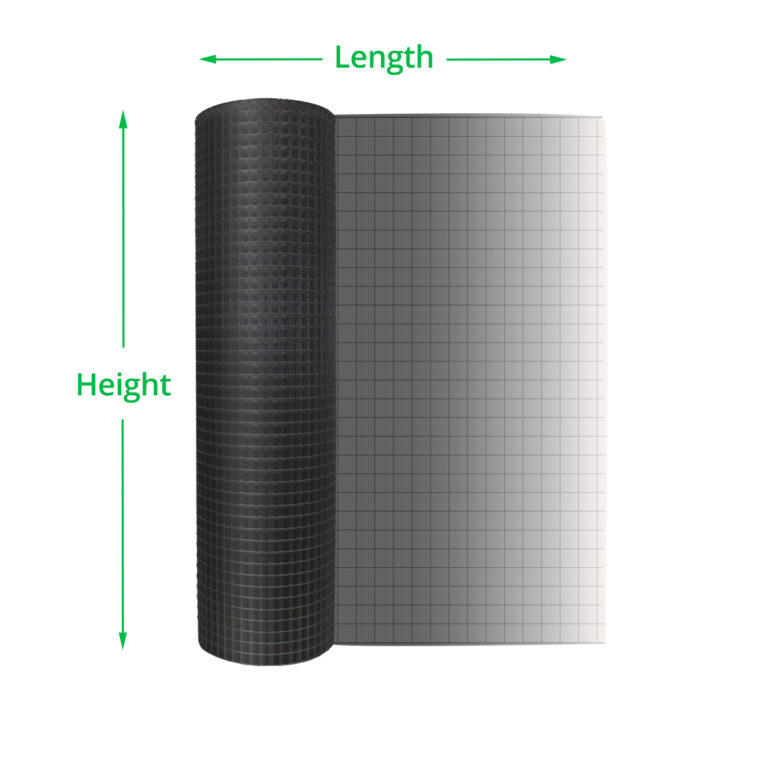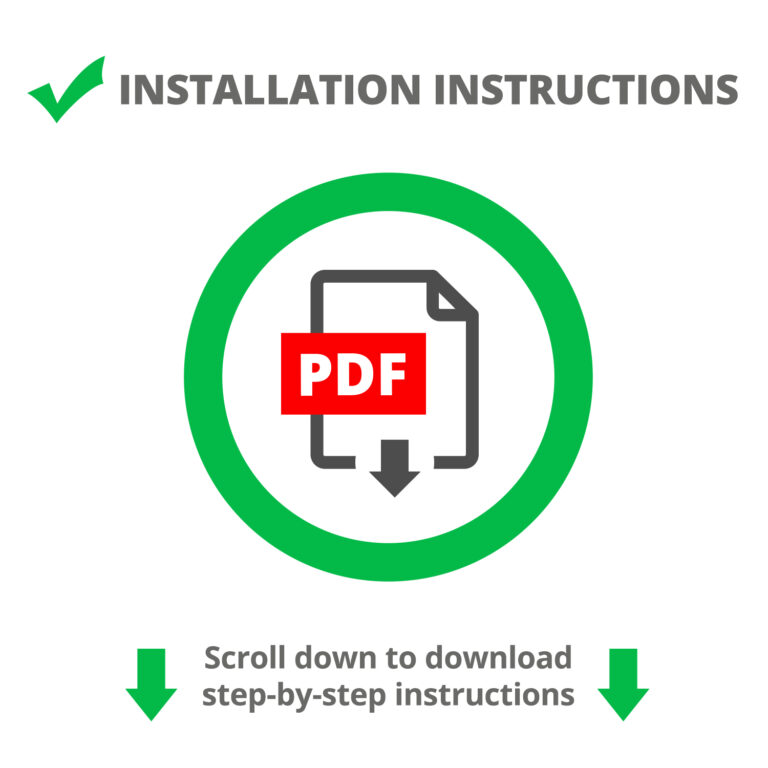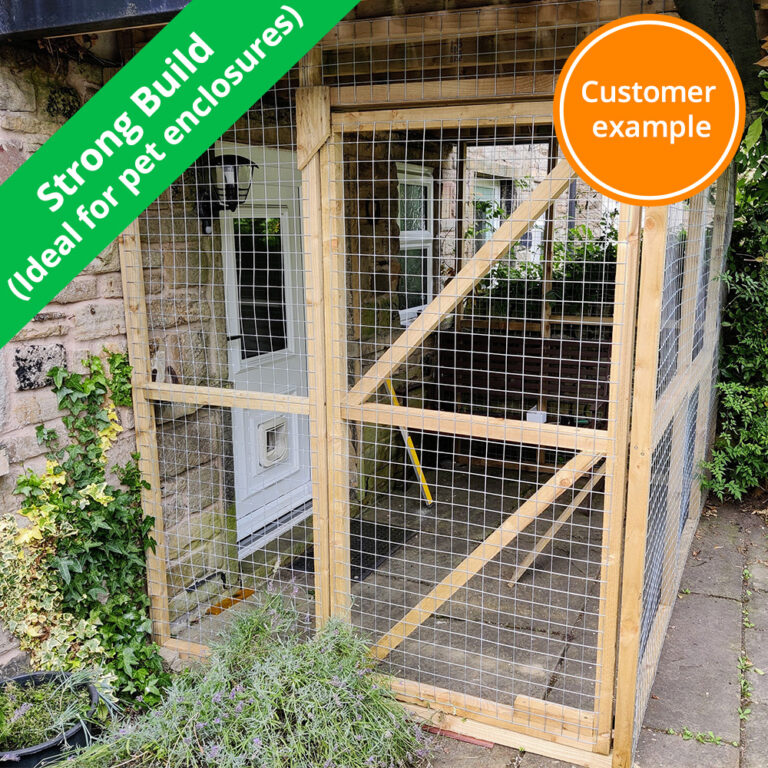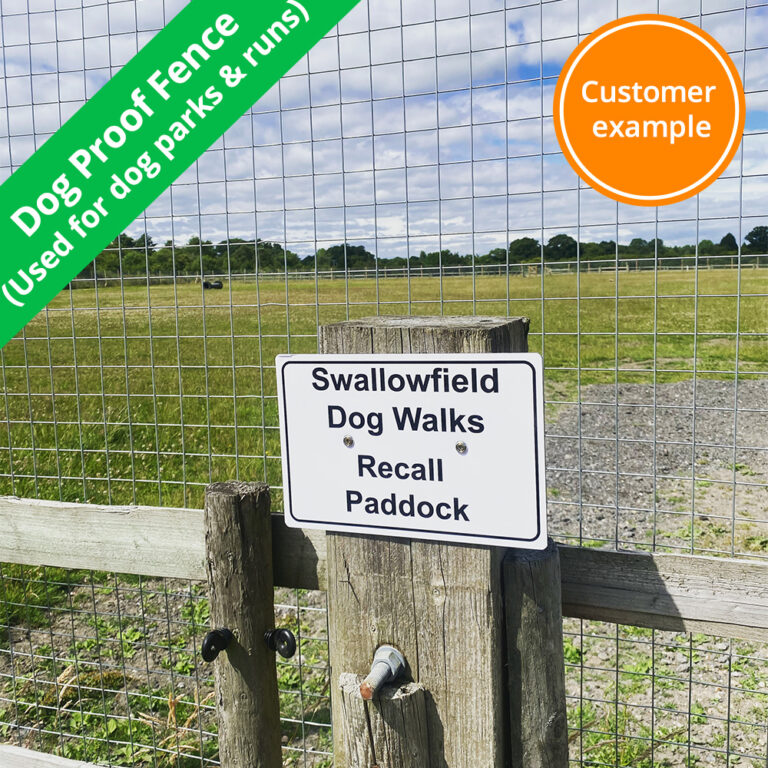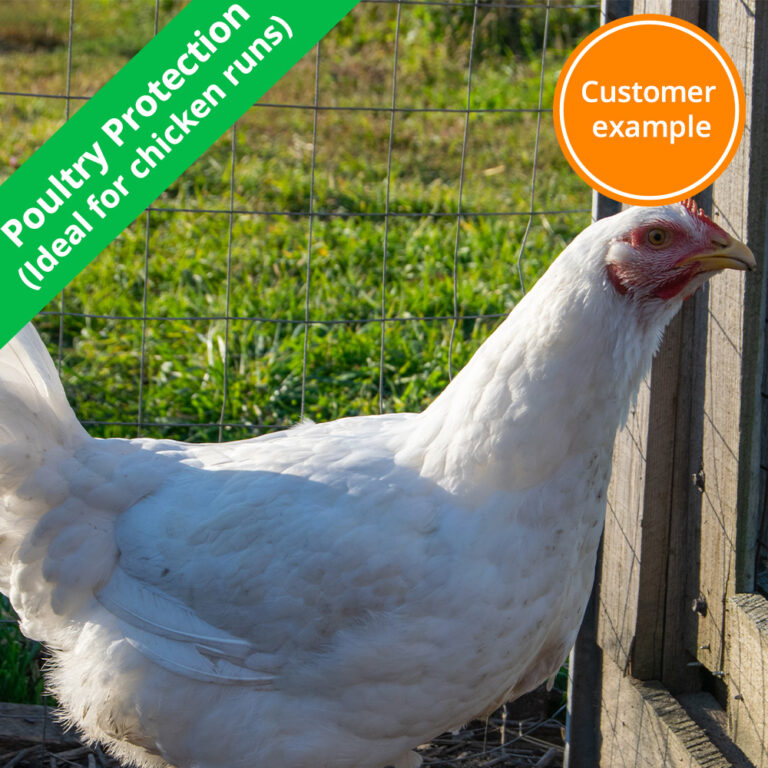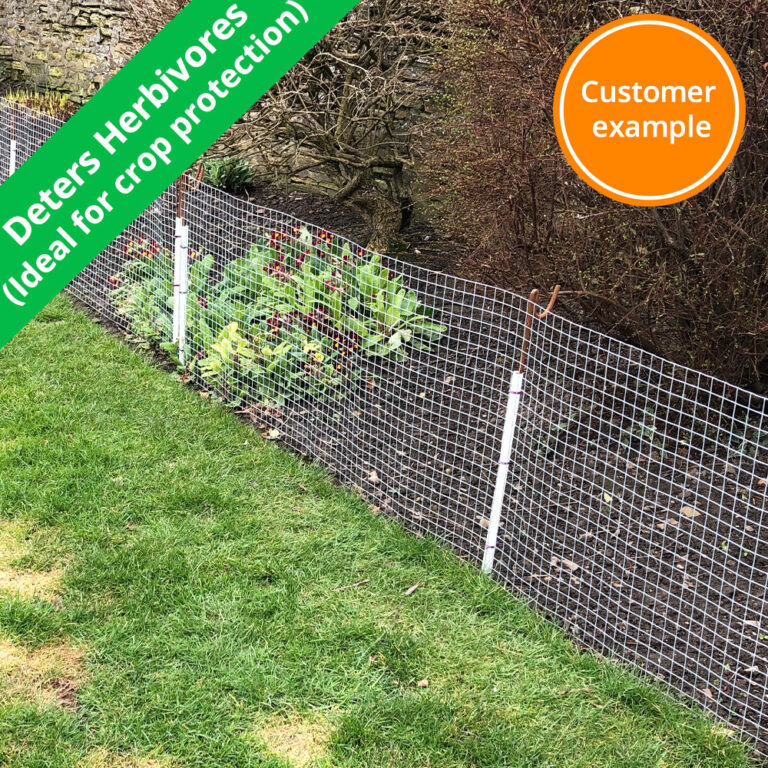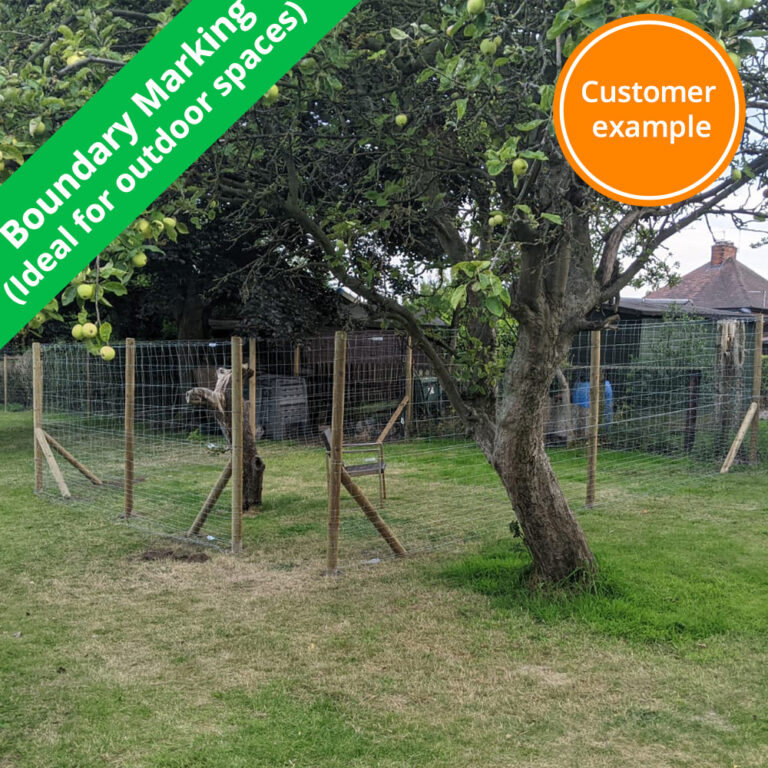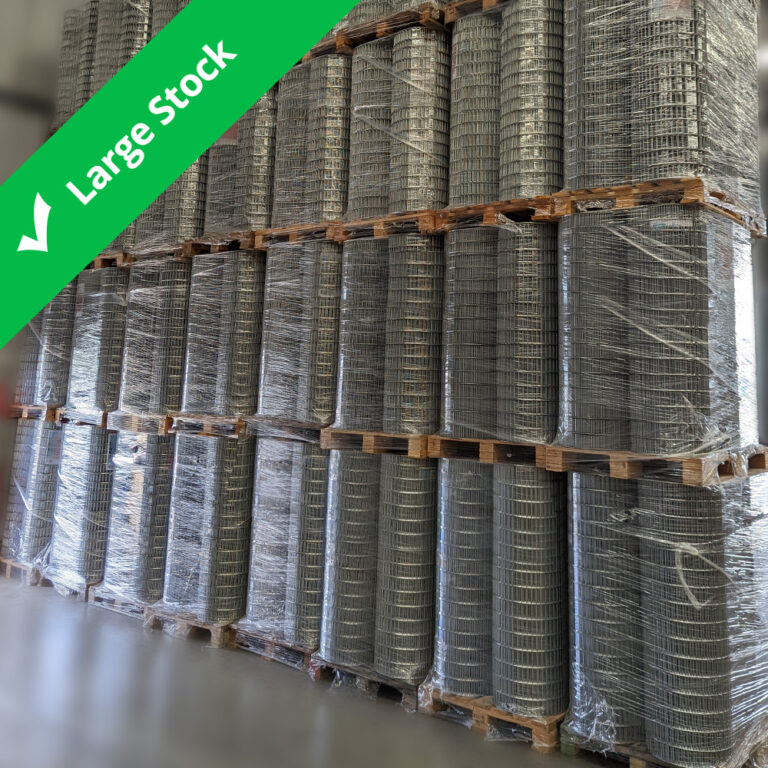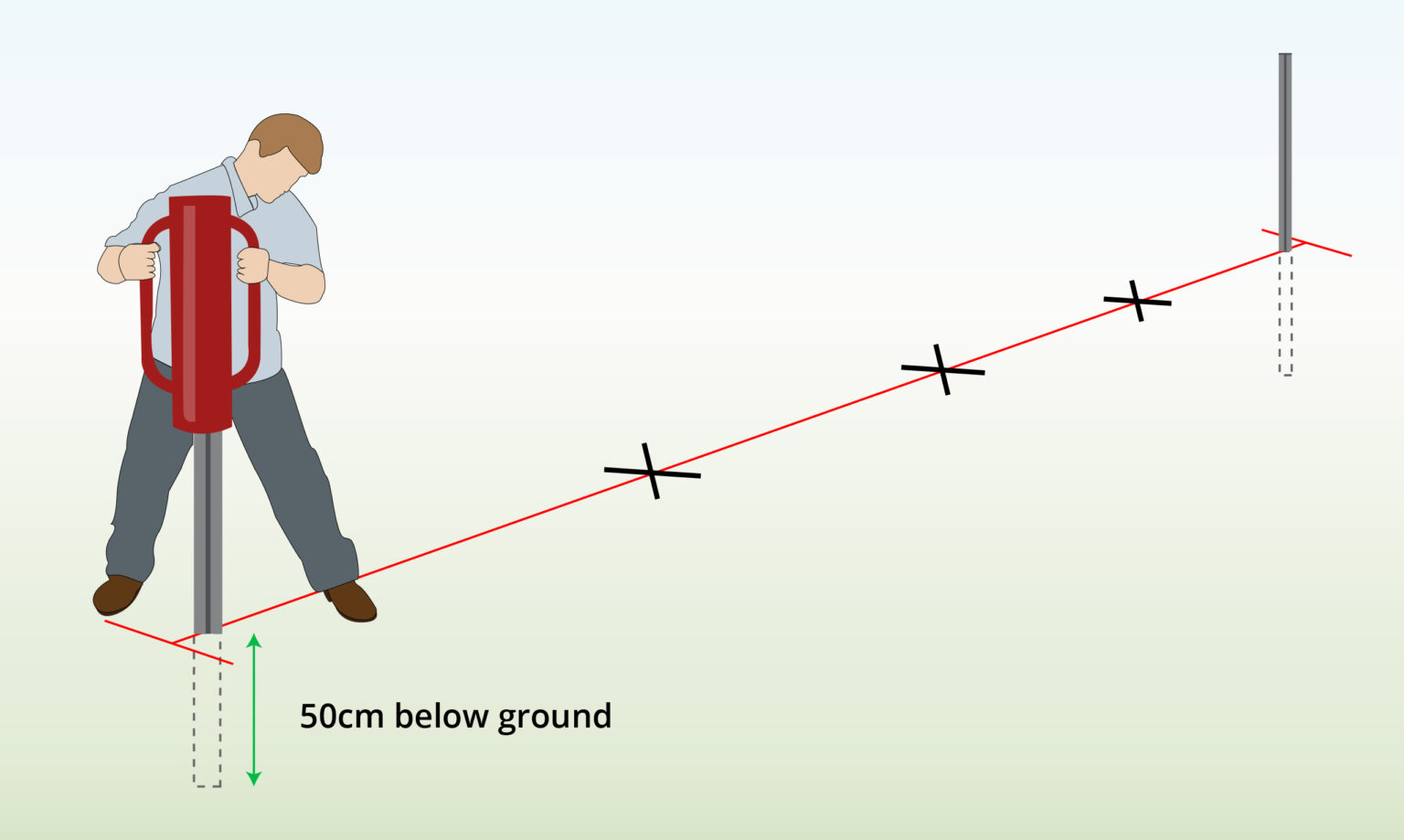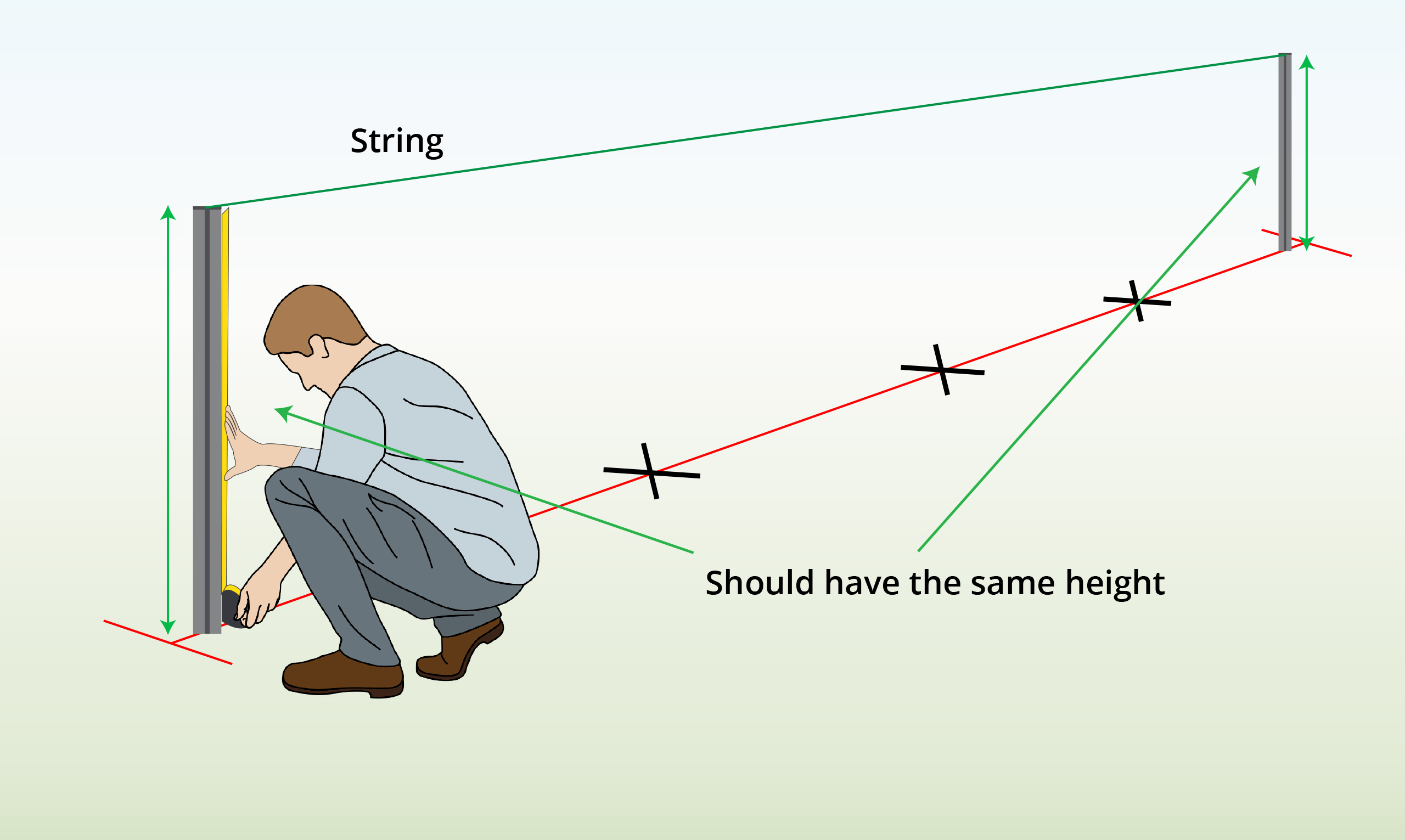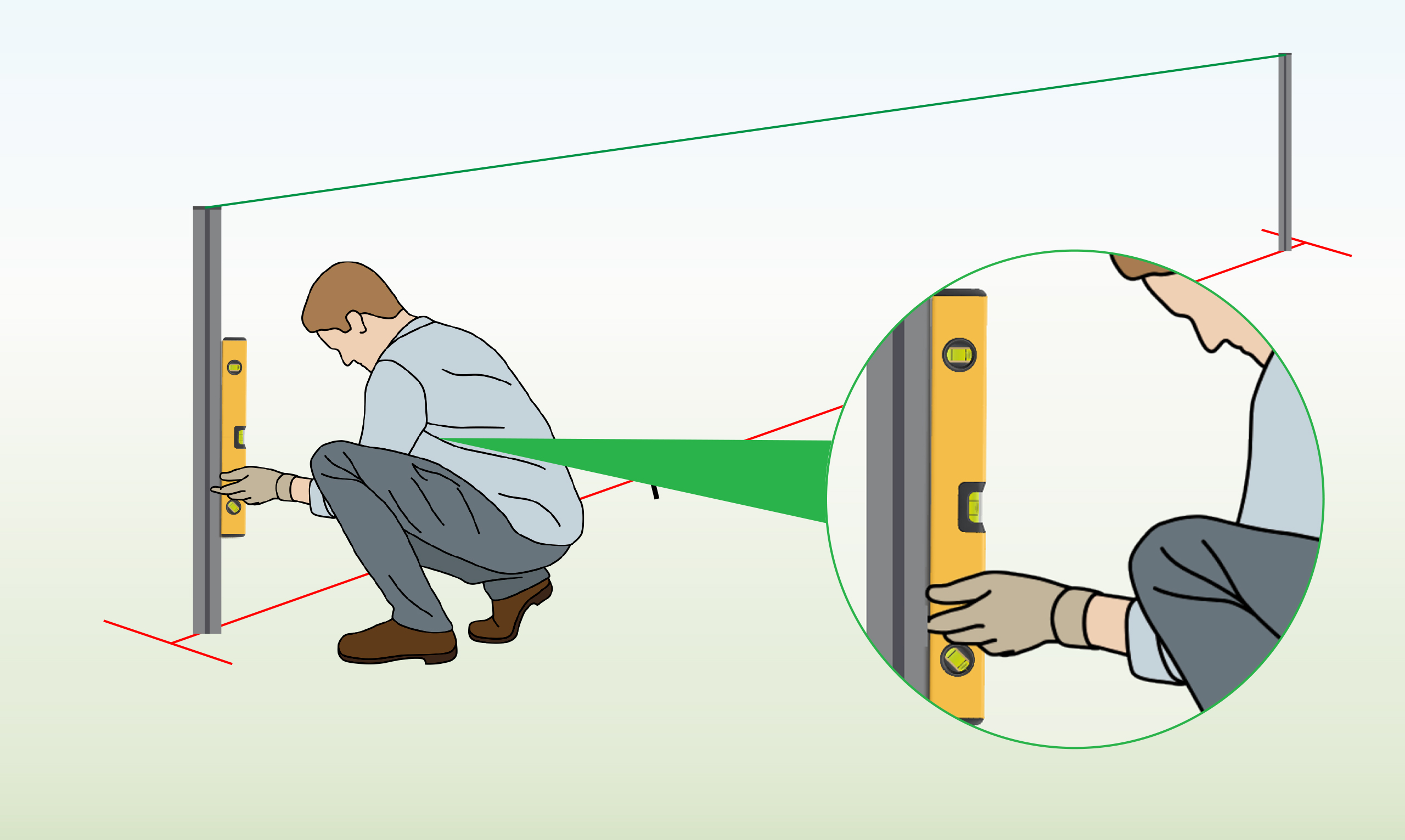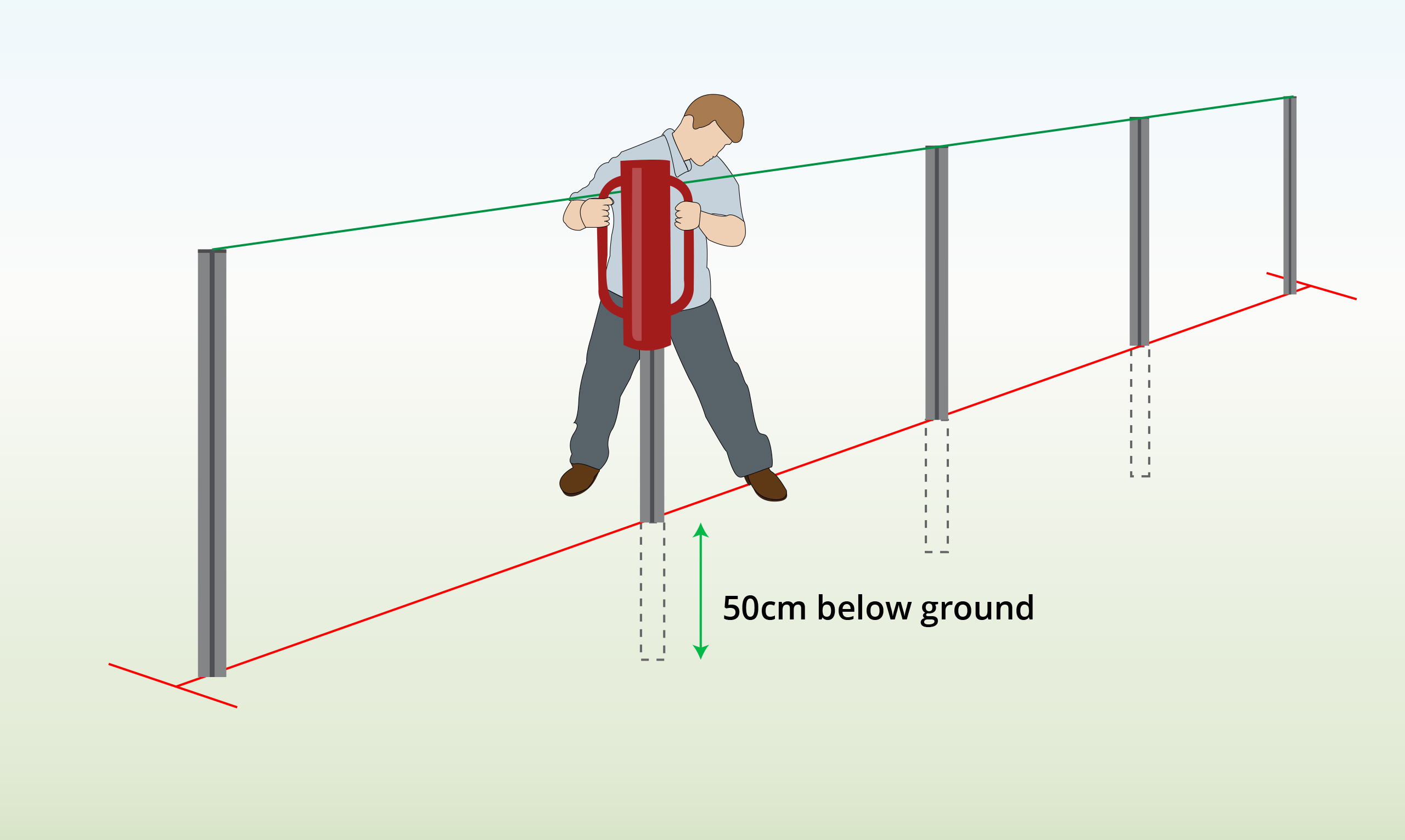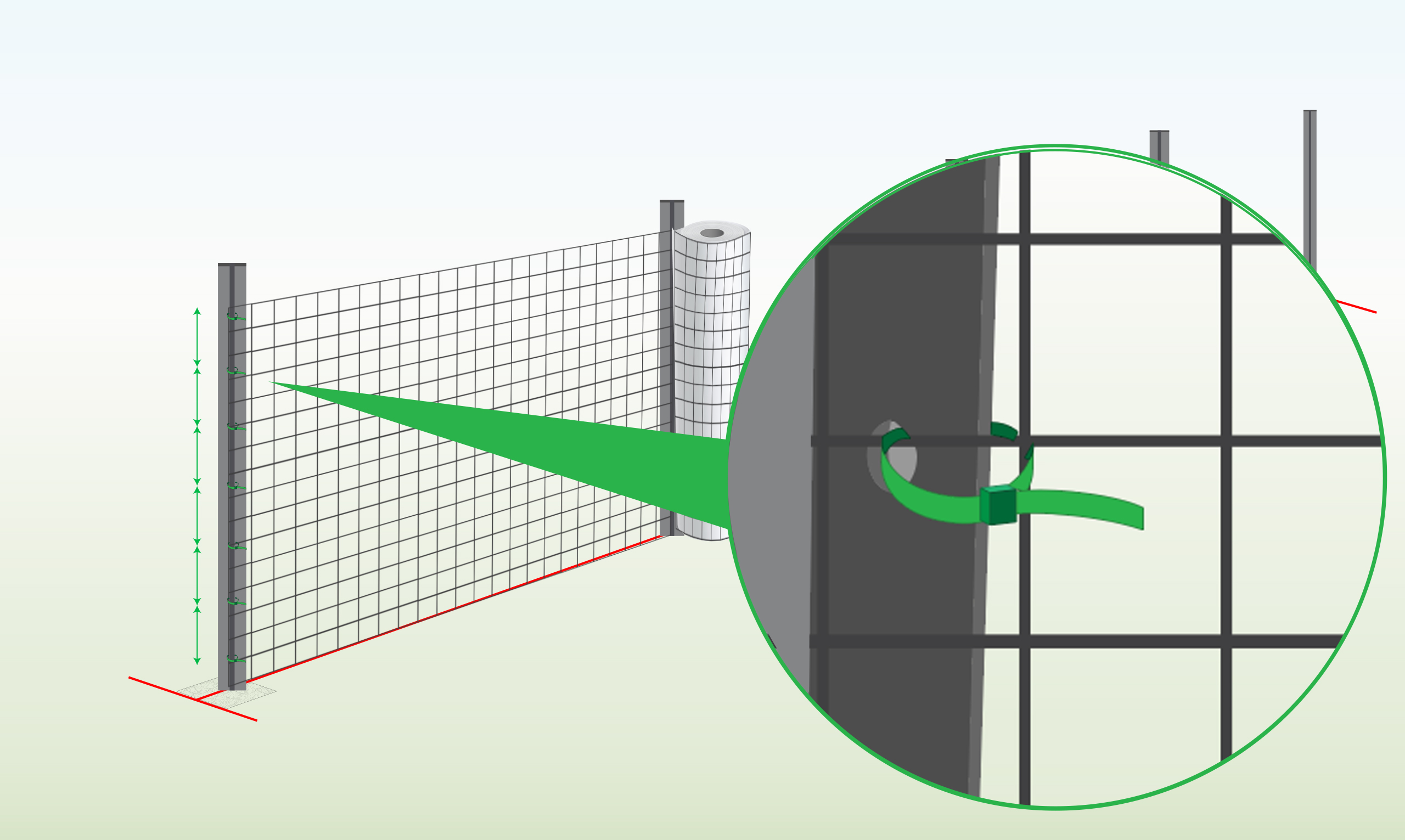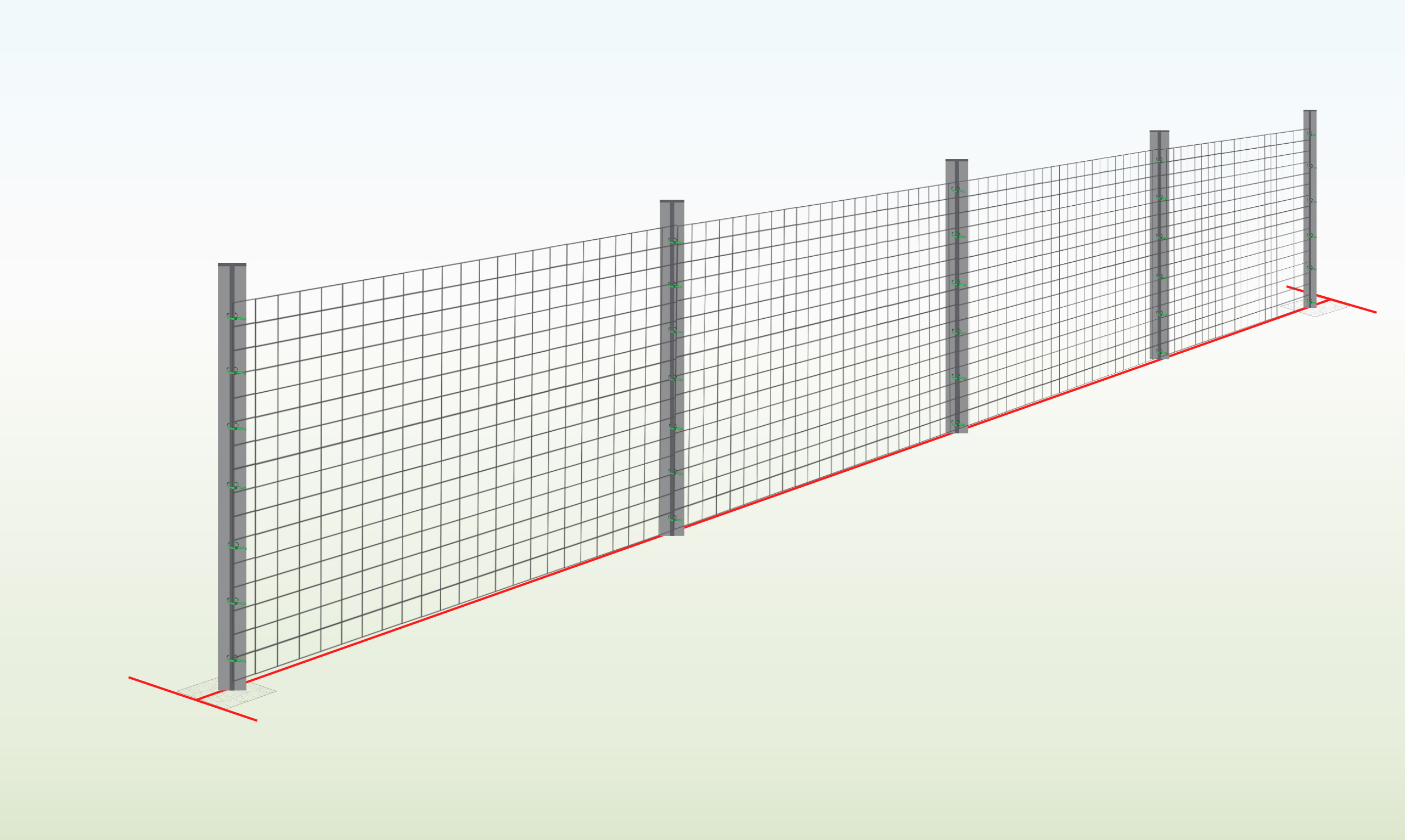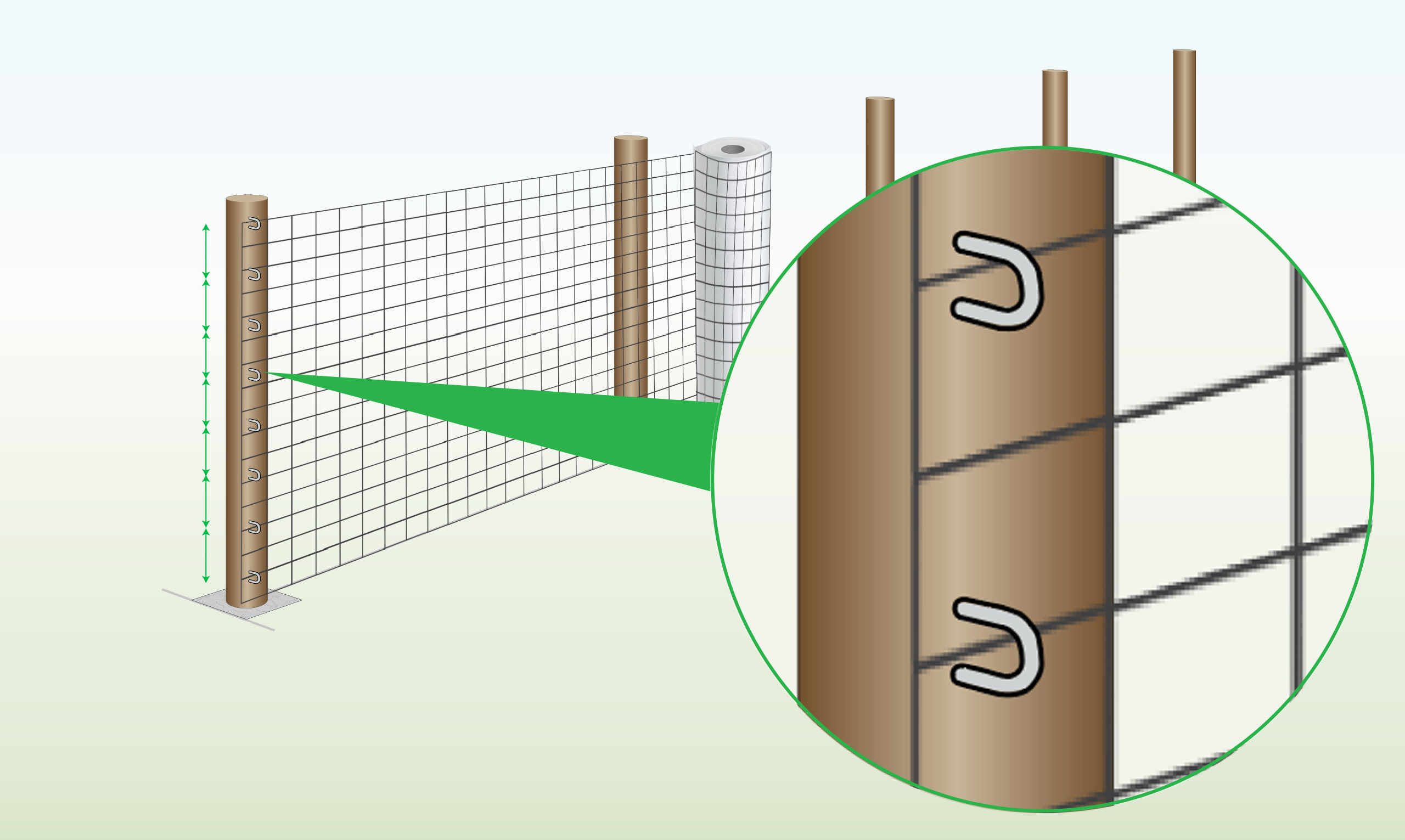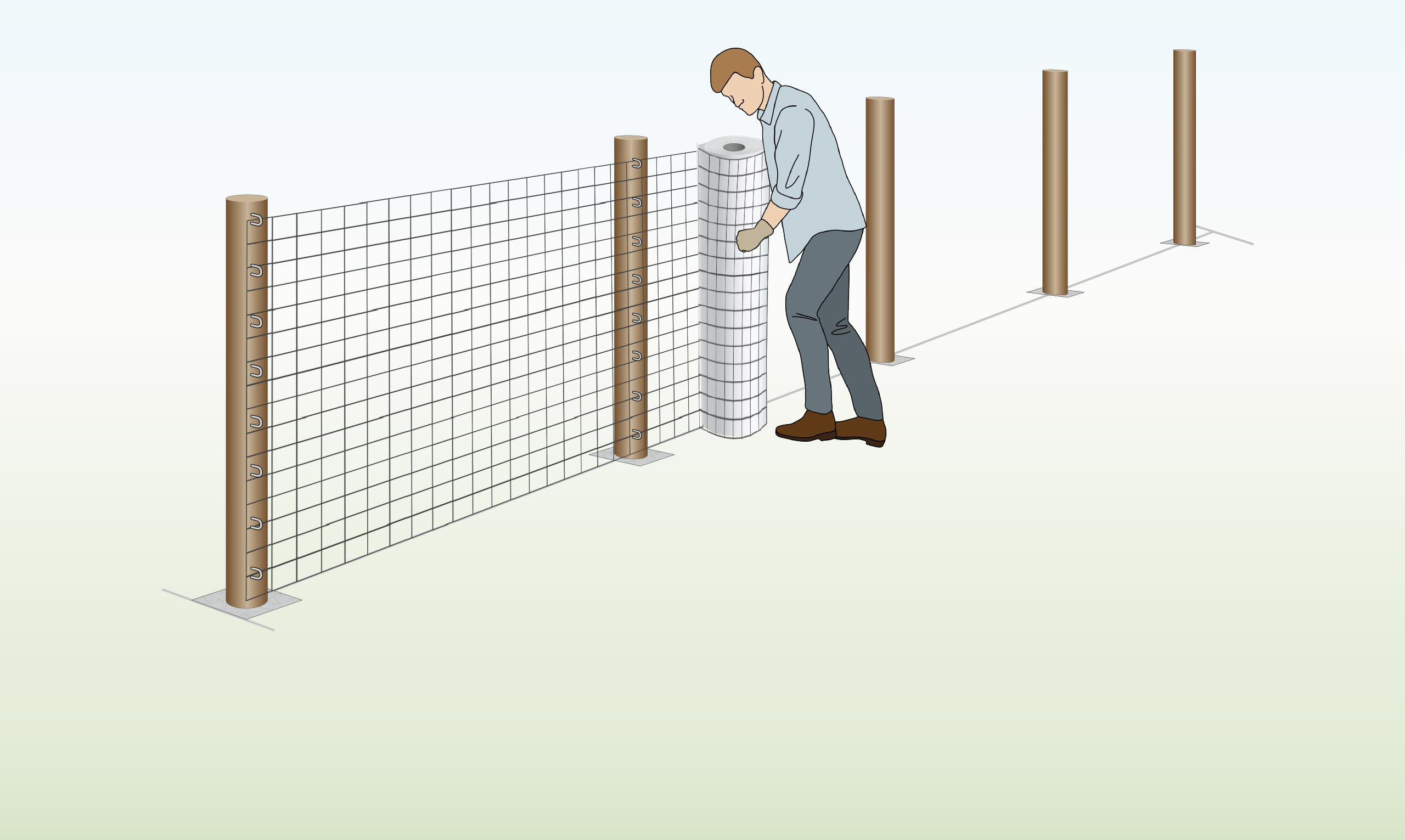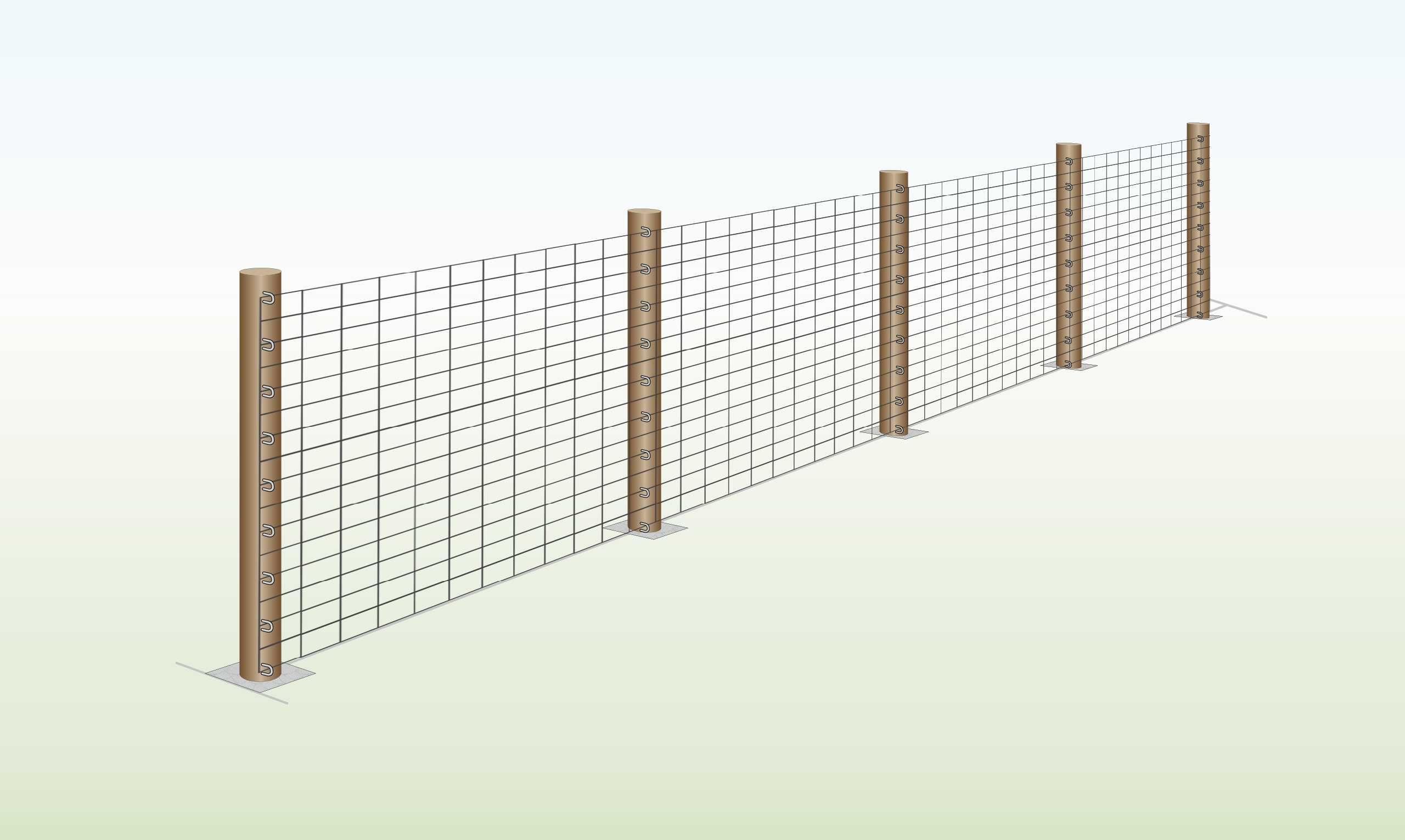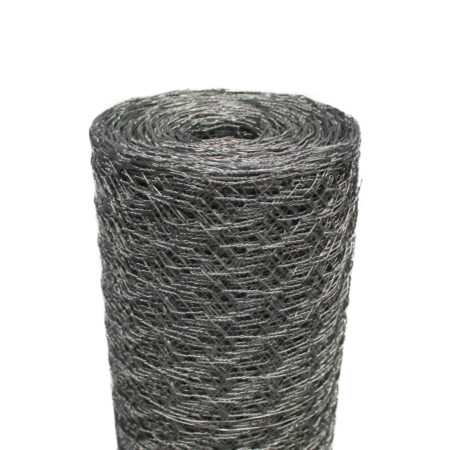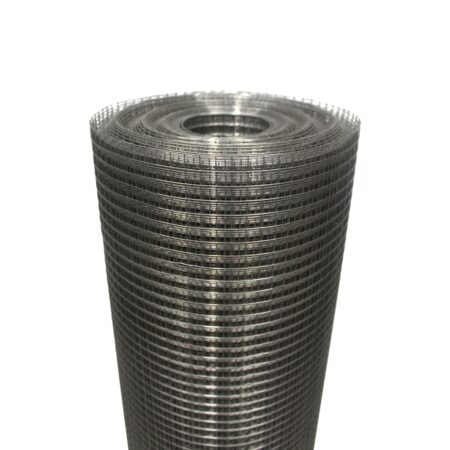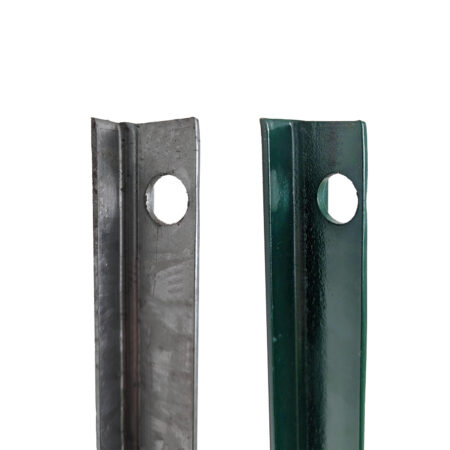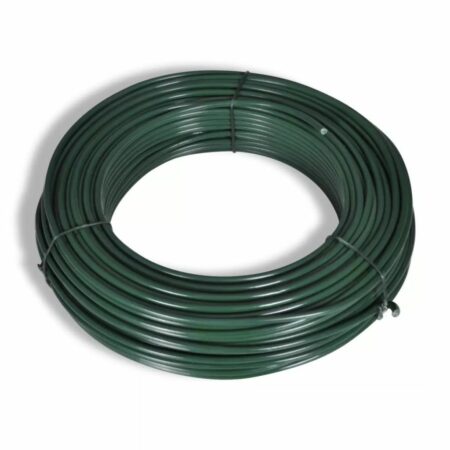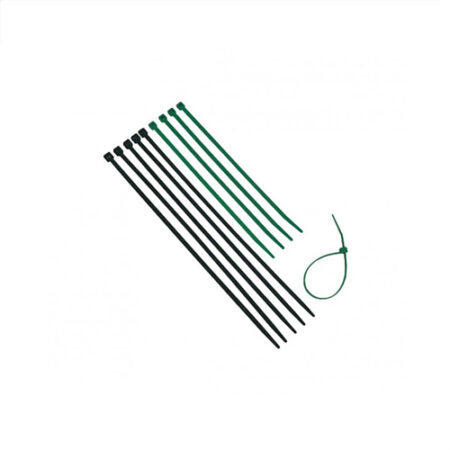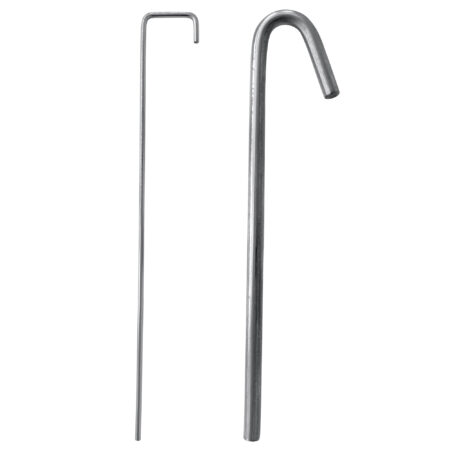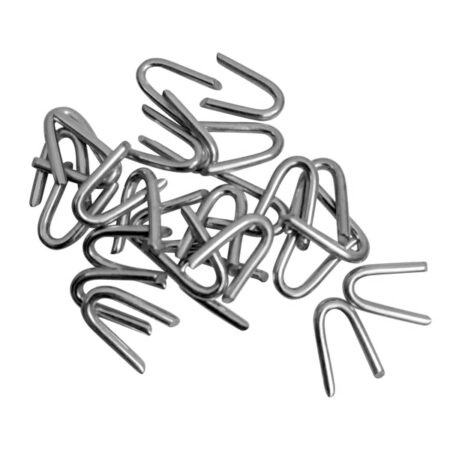Weld Mesh
Full range of galvanised welded wire mesh rolls for perimeter fencing, boundary demarcation, pet enclosures, gardening.
Key info:
- Weather and corrosion-resistant
- European made and economy options
Related: All Wire Mesh, Dog Fencing

Customer Images
Product Information
Grading
| Type | Method | Properties |
| ECONOMY | Steel wires are galvanised before welding, then the mesh is hot-dipped again to create the second layer of galvanisation. | Heavily galvanised after manufacture for longevity. Lower degree of uniformity and straightness. |
| PRIME (Made in Europe) |
Pre-galvanised wires are welded together to create the final product. | Strong weld points. Uniform & regular weld mesh. Smooth finish. Good corrosion resistance. |
| SUPER PRIME (Made in Europe) |
Uses a double method: pre-galvanised steel wires are assembled to create the final product which is then hot dipped again in a very thick layer of zinc. | Best quality for professional use. Increased abrasion & corrosion resistance – can withstand harsher conditions. Longer lifespan. |
Size & Applications
| Hole Size | Available In: | Use For: |
| 50mm x 50mm | Economy & Prime | Dog pens / Fox protection / General boundary fencing |
| 25mm x 25mm | Economy, Prime, Super Prime | Fox protection / Cat enclosures / Garden fencing |
| 19mm x 19mm | Super Prime | Rat & Squirrel protection |
| 13mm x 25mm | Super Prime | Bird protection / Small animal enclosures |
| 13mm x 13mm | Economy & Super Prime | Fruit cages / Bird protection |
| 6mm x 6mm | Economy & Super Prime | Rodent protection |
Installation Instructions
With T Posts
With Wooden Posts
| To Do | Explanation |
|
Step 1 – Mark Area
|
Establish a direct line to delineate the fence running between the two end posts. |
|
Step 2 – Measure Post Distance
|
Designate the positions of the posts, ensuring a spacing of 2-3 meters between each one. To enhance stability, decrease the distance between your fence posts.
|
|
Step 3 – Install End Posts
|
Utilize a post driver or mallet to drive the end posts 50cm into the ground, ensuring they are aligned in the same direction. |
|
Step 4 – Check for Same Height
|
Secure a string between the end posts and verify the height of their installation by using a tape measure. |
|
Step 5 – Check for Straightness
|
Verify the vertical alignment of the posts by employing a spirit level to ensure they are perfectly straight. |
|
Step 6 – Set in Concrete (Optional)
|
For a stronger fence, make it more stable by setting the posts in concrete. Dig a 50cm hole and pour cement for a sturdy foundation. |
|
Step 7 – Install Middle Posts
|
To install the middle posts, repeat steps 3 through 6. Ensure uniformity by orienting the posts in the same direction and installing them straightly. For added strength, contemplate securing the middle posts with concrete. |
|
Step 8 – Attach Mesh to End Post
|
Begin at the end post and fasten the mesh to it using cable ties. Thread the ties through the pre-drilled holes in the post, and you may add additional ties to wrap around the entire post for extra security. |
|
Step 9 – Attach Mesh to Remaining Posts
|
Secure the remaining portion of the mesh by repeating the process outlined in step 8. |
Attachments
| Attach to: | How to: |
| Wood/ Wooden Posts (Staples) |
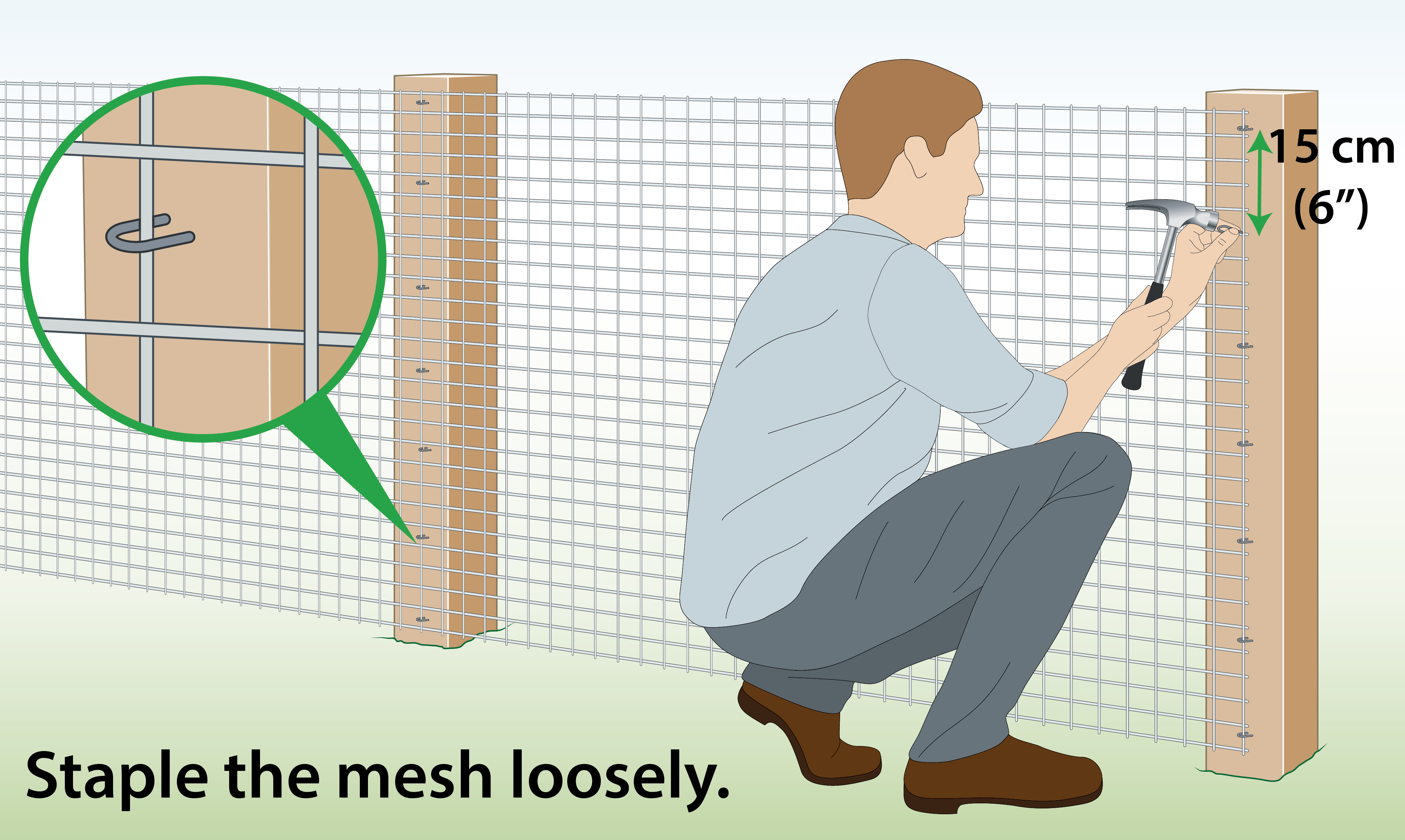 |
| Metal/ Metal Posts |
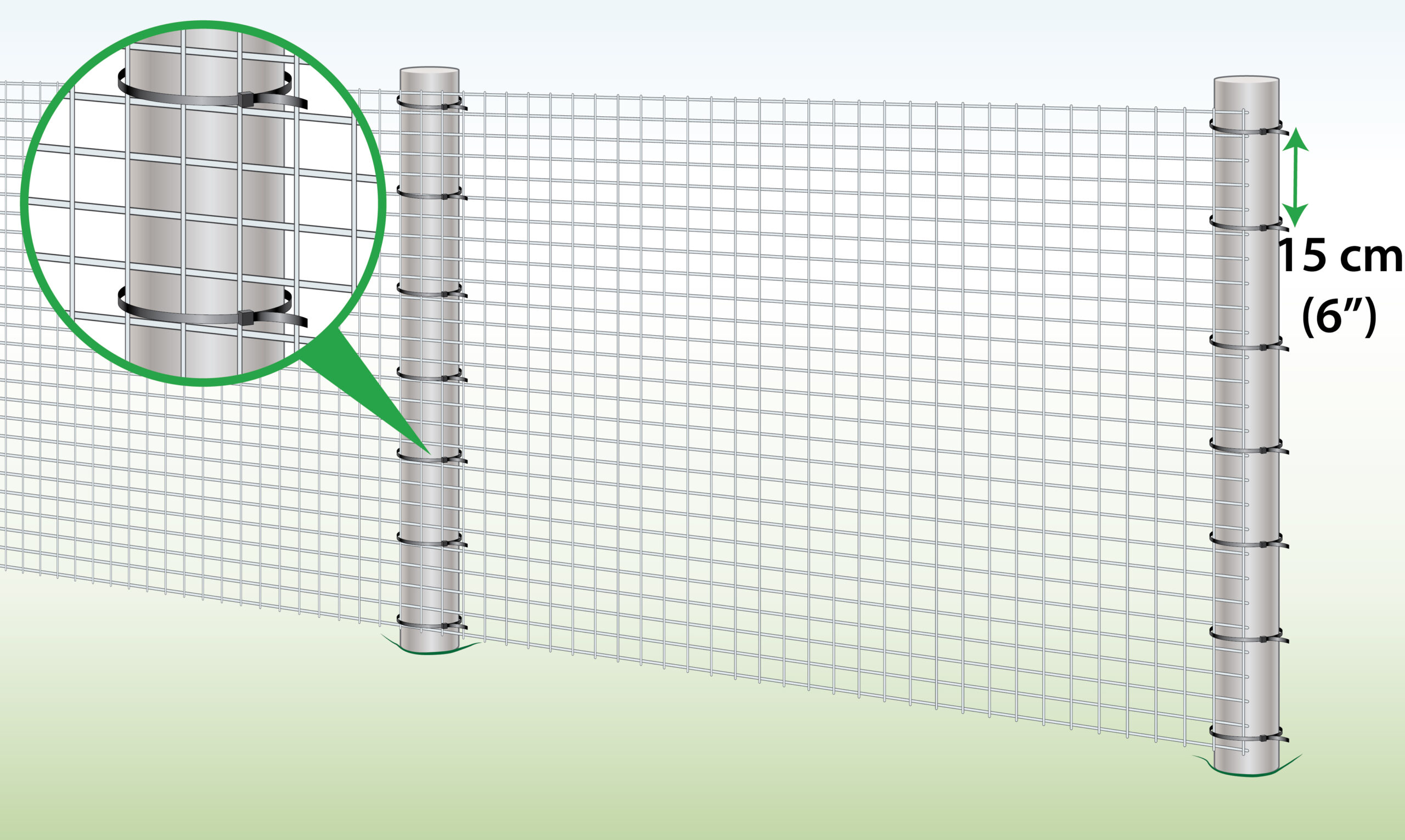 |
|
Concrete Posts |
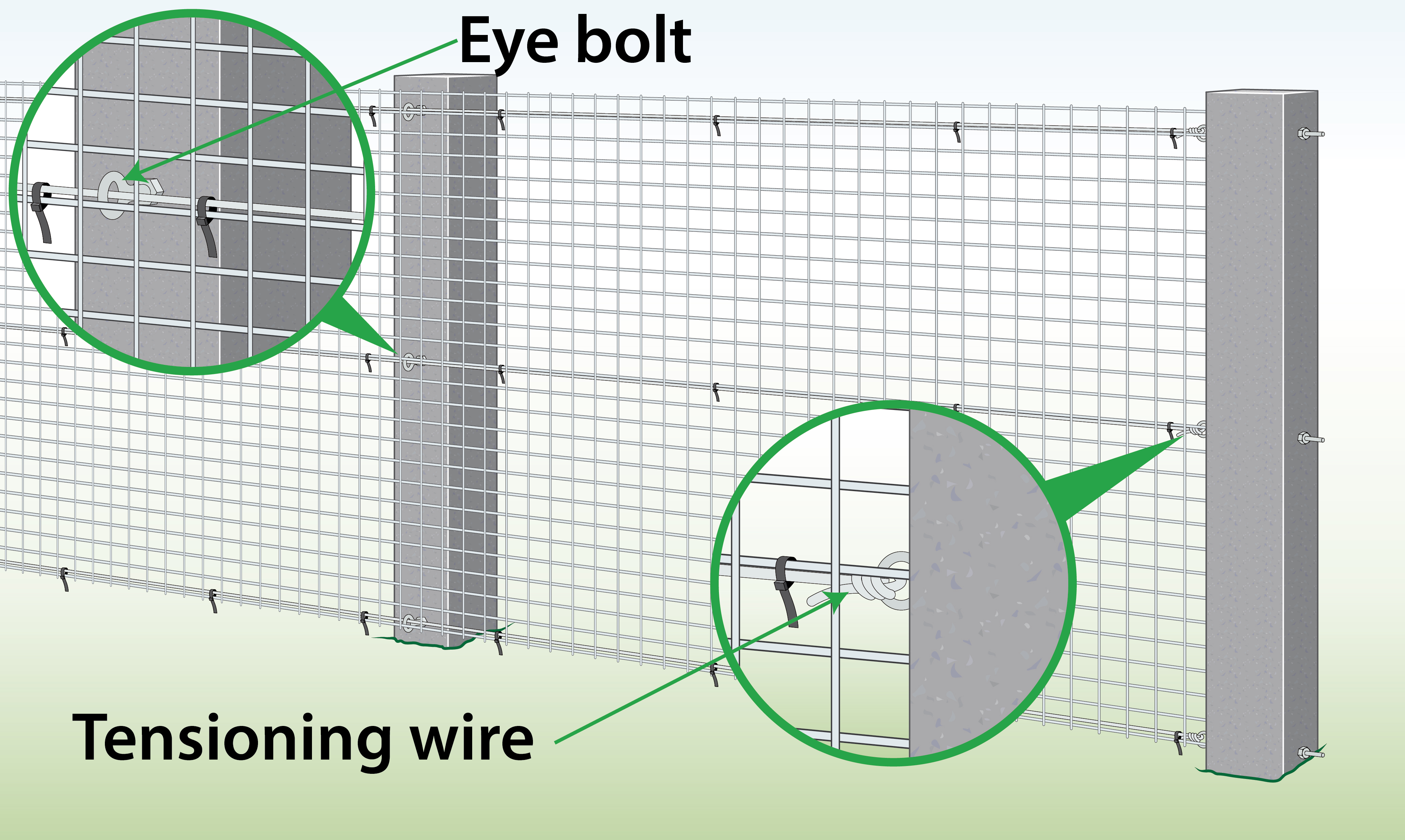 |
|
Soil (Pegs) |
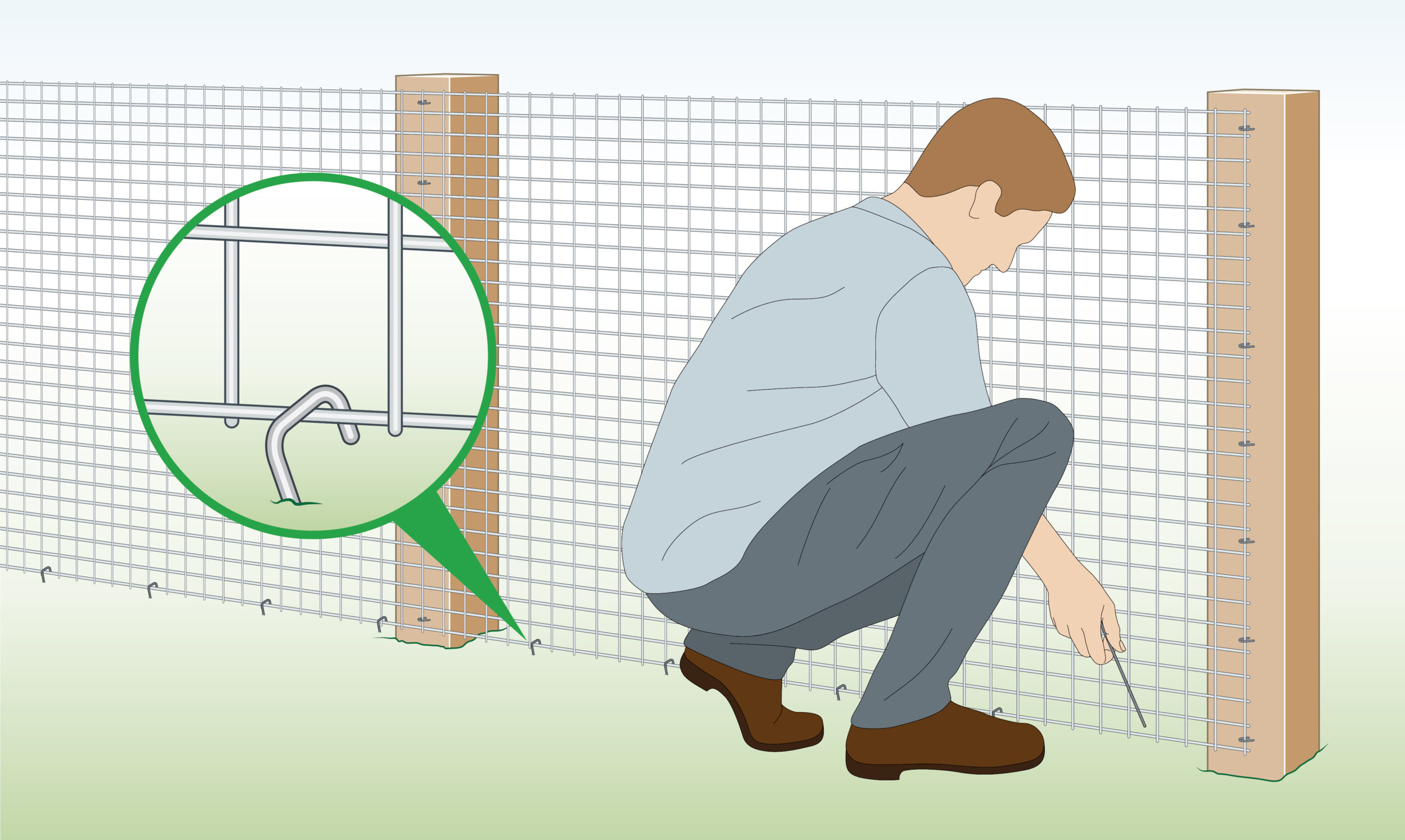 |
|
Wire Fence
|
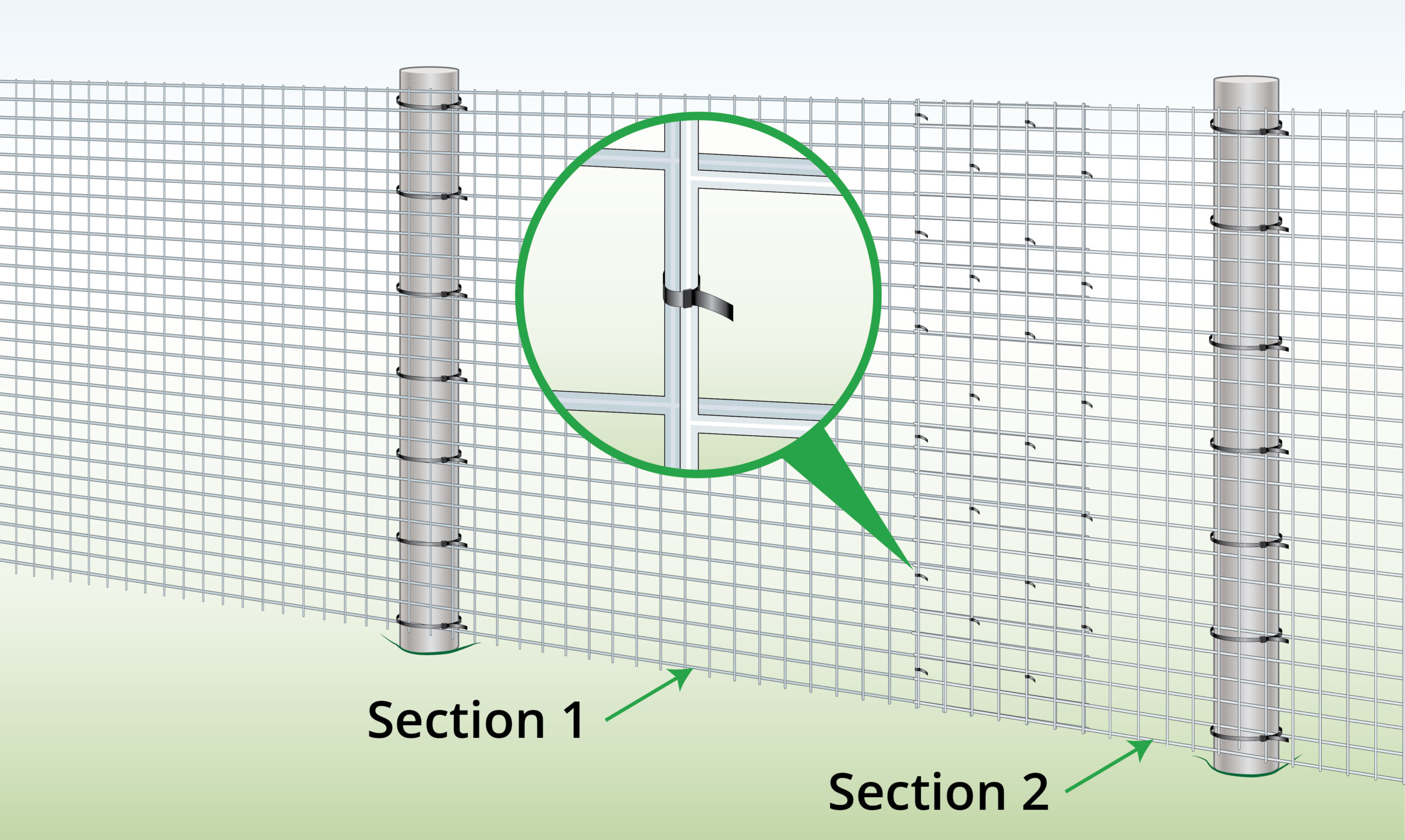 |
Gauges Explained
The diameter or thickness of the wire is referred to as the gauge (g.). The lower the gauge the thicker the wire.
Our weld mesh rolls come in:
- 10g. = 3mm dia.
- 12g. = 2.5mm dia.
- 14g. = 2mm dia.
- 15g. = 1.8mm dia.
- 16g. = 1.6mm dia.
- 19g. = 1mm dia.
- 22g. = 0.7mm dia.
- 23g. = 0.6mm dia.
FAQs
What is galvanised steel?
This is the process by which steel is coated in zinc to protect against corrosion, rust and the elements.
Would I be able to cut this with scissors?
Weldmesh rolls are designed to be stronger and more rigid. Use wire cutters to shorten them to size. A sharp pair of scissors could only cut the lightweight wires (19g, 22g, 23g).
How flexible is the product?
Moderately flexible. The squares are welded at each joint to add strength, which does make it more rigid. For a product that can be more easily moulded around animal coops or into unusual shapes, try chicken wire.
What would you recommend I attach this to in order to make a fence?
Metal fence posts, set in concrete, will offer the best support. Alternatively, wooden posts, while less sturdy, are easier to plant and attach the welded mesh to.
Downloadable PDFs
Specification
- Economy Welded Wire Mesh Specification
- Prime Welded Wire Mesh Specification
- Super Prime Welded Wire Mesh Specification

